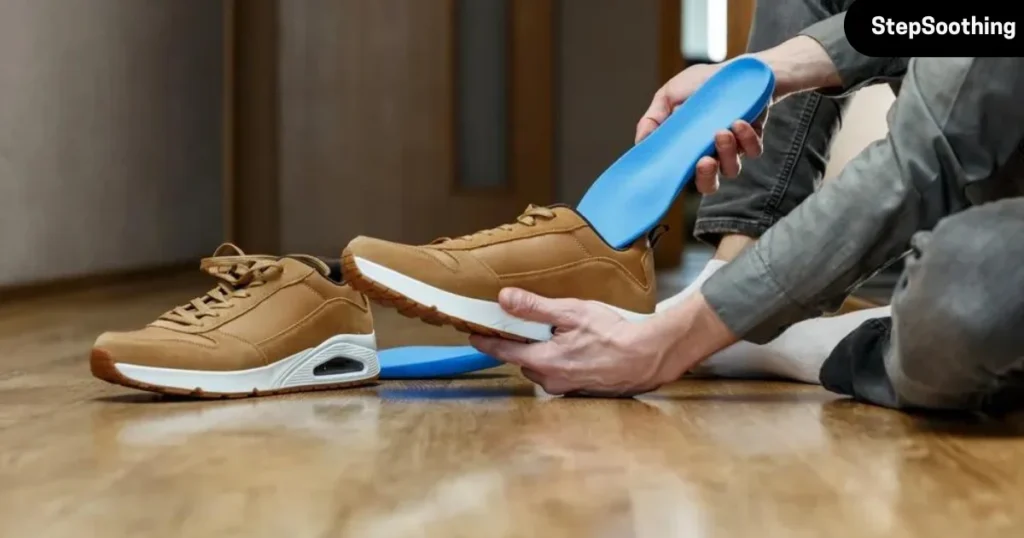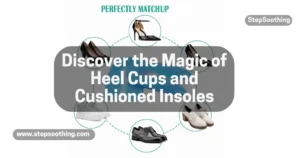Skechers shoes are known for their comfort-driven design, often featuring memory foam or orthopedic-style insoles. But if you’re dealing with foot pain, using custom orthotics, or concerned about hygiene, you may need to remove or replace the insoles. This guide explains which Skechers models support insole removal, how to do it without damaging the shoe, and how replacement affects fit and comfort.
Can Skechers Insoles Be Removed? A Complete Guide to Customizing Your Comfort

Why Remove or Replace Skechers Insoles?
People remove Skechers insoles for several reasons:
- Support: Stock insoles may lack arch or heel structure for flat feet or plantar fasciitis.
- Orthotics: Custom inserts often require removal of built-in insoles.
- Hygiene: Sweat and odor build up over time; removable insoles are easier to clean or replace.
- Comfort fit: Insoles wear unevenly or compress, affecting shoe balance and cushioning.
Removing or replacing the insole customizes the internal fit for your foot mechanics.
Read More
How Long Do Shoe Inserts Last? Unlocking Insole Secrets
Types of Insoles Used in Skechers Shoes
| Insole Type | Material | Models | Removable |
|---|---|---|---|
| Memory Foam | PU + Gel Foam | Uno, Equalizer | ❌ / Partial |
| Air-Cooled Foam | Breathable PU | GOwalk, Flex Appeal | ✅ |
| Arch Fit | Podiatrist-Certified Foam | Arch Fit Series | ✅ |
| Goga Mat | High-Rebound EVA | GOwalk Series | ✅ |
| Luxe Foam | Shock-Absorbing Foam | D’Lites | ❌ |
✅ = Removable / ❌ = Glued down or semi-fixed
How to Check and Remove Skechers Insoles
How to Know if Skechers Insoles Are Removable
Loosen laces and lift the tongue & Grip the insole at the heel and lift
If it moves freely: It’s removable.
If it resists: It’s likely glued and needs extra care.
Step-by-Step: Removing Skechers Insoles Without Damage
Step 1: Inspect the Insole
Check for tabs or raised edges. Most insoles span full-length across the footbed.
Step 2: Lift from Heel First
Gently slide fingers or a dull tool under the heel. If it lifts easily, proceed slowly.
Step 3: Use Heat if Glued
Apply a hairdryer on low heat for 20–30 seconds to soften adhesive—especially around the arch and heel.
Step 4: Peel Carefully
Pull the insole forward with consistent pressure. Avoid yanking to prevent tears or leaving foam behind.
Step 5: Repeat for Other Shoe
Follow the same steps, warming glue where needed.
Step 6: Clean Interior
Use rubbing alcohol or damp cloth to remove glue or residue from the footbed.

Can You Replace Skechers Insoles?
Yes. Most Skechers with removable insoles allow for third-party replacements or custom orthotics.
Tips for Replacement:
- Use insoles designed for neutral arch or high-volume shoes
- Trim oversized inserts using the original insole as a template
- Choose orthotics with firm arch support for plantar fasciitis or flat feet
Read More
Insoles for Shoes: Comfort Redefined, Style Enhanced
How Does Replacing Insoles Affect Fit and Comfort?
| Action | Impact |
|---|---|
| Removing thick insoles | Looser fit, less shock absorption |
| Using custom rigid orthotics | Snugger fit, better support, may feel tighter |
| Wearing without any insoles | Heel slippage, arch strain |
Always test shoe fit after making changes and consider gel heel pads or socks to balance any gaps.
Benefits of Removing or Replacing Insoles
- Better support: Custom orthotics improve arch alignment and joint tracking
- Improved hygiene: Swapping insoles prevents bacteria buildup
- Extended shoe life: Reduces odor and uneven wear
- Relieves pain: Helps reduce pressure on knees, heels, and lower back
Example:
Potential Downsides of Insole Removal
- Glue residue may remain
- Fit may loosen or feel unstable
- Removing glued insoles could damage interior lining
- Improper removal may void return eligibility or warranty

Skechers Models Best Suited for Insole Replacement
| Model | Removable Insole | Orthotic Friendly |
|---|---|---|
| Arch Fit | ✅ | ✅ |
| GOwalk 6 | ✅ | ✅ |
| Max Cushioning | ✅ | ✅ |
| D’Lites | ❌ / Partial | ❌ / Limited |
Choose models with deep footbeds and removable foam layers for the best results.
Read More
Sole Solutions: Tips and Tricks on How to Clean Shoe Insoles
Alternatives to Full Insole Removal
You may not need to fully remove the insole. Try:
- Gel heel cups for heel pain
- Thin orthotic overlays for mild support
- Breathable sock liners for moisture control
- Cushioned insoles over original (if space allows)
Arch Fit models are already designed to reduce the need for any modification.
Will Insole Removal Void the Skechers Warranty?
Not always. Skechers does allow insole replacement if done safely.
Warranty risks:
- Yes, if glued insole is forcefully removed, damaging the shoe
- No, if factory insole is removable and the shoe is not altered internally
📷 Tip: Take a photo of the insole area before modifying and contact Skechers support for confirmation.
People Also Asked
Read More



